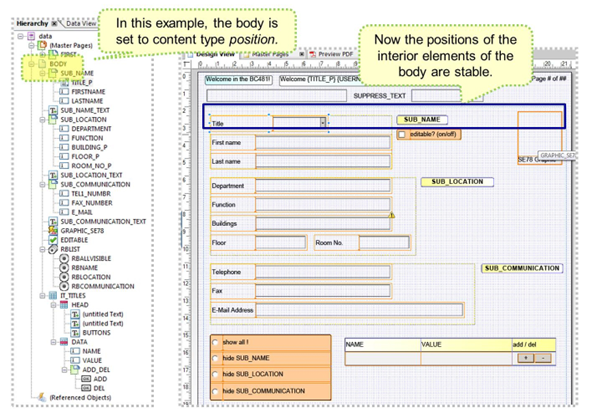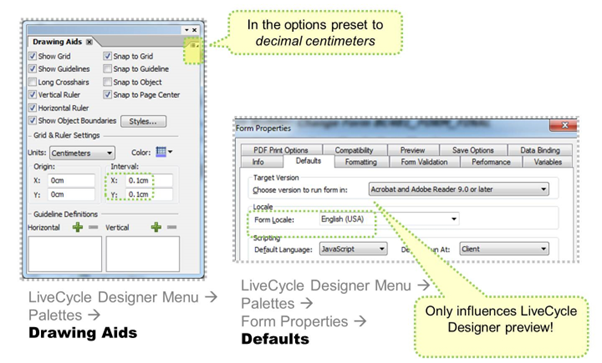The Form Layout
Assuming that no breaks are coded and the occurrence of FIRST is set to 1, the content area of FIRST is filled until the end. The next master page, NEXT, is processed until its content area is filled with the rest of the data rows.

Here you can see an example of an interactive offline form.
The content type of the subform BODY (the body page marked with blue borders) is set to “position.” This means that there is no dynamic floating content on the page that will overflow the dimensions of the content area. If this should be necessary, use content type “floating.”
For print scenarios, “floating” is typical; “position” is unusual. However, in interactive offline scenarios, this is quite typical because interactive forms should have an easy-to-understand layout! Everything relevant and important is shown on one page and the user input is supported with dropdown lists, checkboxes, and buttons.


Before the design process starts, preset the palettes and configure the position of the applicable object library.
Lots of elements will be used in this course on interactive elements.